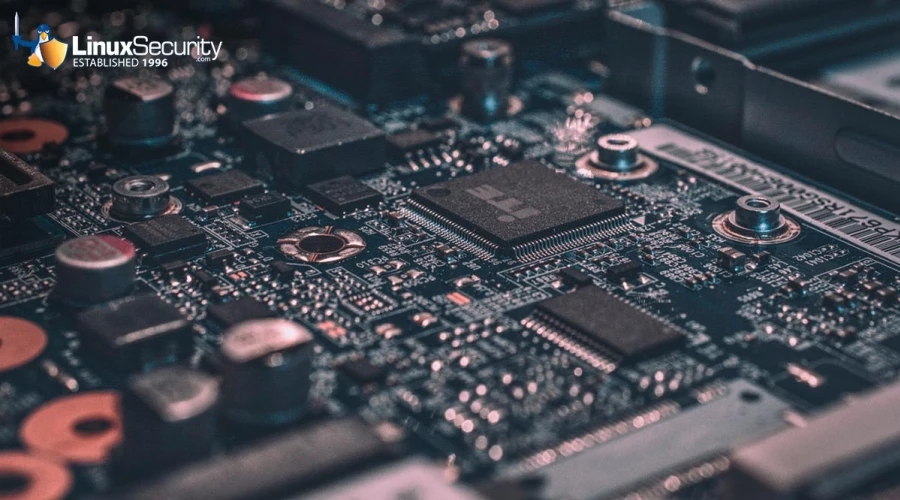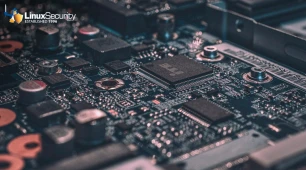
We Linux security admins have a new challenge on our hands: it was recently discovered that Qualcomm Snapdragon X Plus and Elite processors - found in laptops, tablets, cellphones, and other embedded devices - are still vulnerable to Spectre-related attacks. Despite its prominence in the industry, this vulnerability arises because Qualcomm has not upstreamed the necessary patches for appropriately treating these affected CPU cores in the mainline Linux kernel.
Spectre vulnerabilities exploit the speculative execution feature of most modern CPUs, allowing attackers to access sensitive data across various processes. Given how critical a role security plays in maintaining system integrity, addressing this oversight on Qualcomm’s part is essential. While Linux distro support for these processors is very limited, if Qualcomm CPUs in your Linux system are exploited due to these Spectre vulnerabilities, it could mean unauthorized access to sensitive data, like personal files or passwords, by malicious users. This kind of breach could lead to identity theft or even financial loss, making it crucial to address these security issues promptly.
To help you understand this risk and secure your systems against it, I'll explain the recently discovered issue, the patch series proposed to address it, and offer practical recommendations for fellow security-conscious Linux admins.
Understanding Efforts to Mitigate this Issue
 Douglas Anderson, a diligent Google engineer, has taken the initiative to address these vulnerabilities by initiating a patch series. He aims to ensure that these Qualcomm CPU cores are aptly managed with the necessary Spectre security measures, mainly focusing on Spectre-BHB (Branch History Buffer). Anderson’s patches strive to insulate these CPUs from potential exploits by mitigating the identified vectors through which Spectre could abuse speculative execution. It's pretty remarkable that fixing a hardware problem requires a software patch, as opposed to fixing the CPU directly or simply buying another one.
Douglas Anderson, a diligent Google engineer, has taken the initiative to address these vulnerabilities by initiating a patch series. He aims to ensure that these Qualcomm CPU cores are aptly managed with the necessary Spectre security measures, mainly focusing on Spectre-BHB (Branch History Buffer). Anderson’s patches strive to insulate these CPUs from potential exploits by mitigating the identified vectors through which Spectre could abuse speculative execution. It's pretty remarkable that fixing a hardware problem requires a software patch, as opposed to fixing the CPU directly or simply buying another one.
Nonetheless, Anderson's task isn’t straightforward. Qualcomm’s CPUs are derivatives of ARM cores, yet they come with unique MIDR (Main ID Register) values, making it challenging to pinpoint appropriate patches. These cores' variety and custom nature necessitate a deep understanding and a precise approach to patching. Some of his initial patches are speculative and might not compile successfully, highlighting the indispensable need for Qualcomm’s direct involvement. Their expertise and detailed knowledge of their processor architectures are crucial to refining and ensuring the effectiveness of these mitigations.
Challenges in Mitigation Efforts
One of the primary challenges in addressing these vulnerabilities is identifying which patches are appropriate for the myriad Qualcomm CPUs affected. With CPUs being derivatives of ARM cores, the unique MIDR values introduce complexity. Implementing a one-size-fits-all patch seems unattainable without comprehensive information on each core type and its specific vulnerabilities. This dilemma has necessitated an element of trial and error in Anderson's patches. Thus, Qualcomm's active participation isn't just beneficial; it’s essential. Their input can help validate patches, ensuring they compile correctly and deliver the desired level of protection.
Community Proposals for a Proactive Security Approach
 The broader Linux community, including key contributors like ARM Linux engineer Will Deacon, has suggested more proactive approaches to handling these vulnerabilities. Deacon has proposed a significant paradigm shift: rather than assuming CPUs are safe unless proven otherwise, the new approach would treat all unknown CPUs as vulnerable by default. This would invert the current model, necessitating CPU vendors to step forward to explicitly declare their CPUs unaffected if that is true.
The broader Linux community, including key contributors like ARM Linux engineer Will Deacon, has suggested more proactive approaches to handling these vulnerabilities. Deacon has proposed a significant paradigm shift: rather than assuming CPUs are safe unless proven otherwise, the new approach would treat all unknown CPUs as vulnerable by default. This would invert the current model, necessitating CPU vendors to step forward to explicitly declare their CPUs unaffected if that is true.
This proposed shift aims to push CPU vendors, like Qualcomm, to be more proactive about acknowledging and addressing product vulnerabilities. By assuming a default state of vulnerability, the burden of proof shifts to the vendors, encouraging them to engage more actively with the kernel community and ensure that mitigations are properly applied to their CPUs.
Hoping for Qualcomm's Intervention
The Linux community is eagerly awaiting Qualcomm’s intervention. The ideal scenario would be for Qualcomm to deeply involve itself in the patching process, recognizing the severity of the vulnerabilities and the importance of securing its processors. Without their active participation, the risk remains high that some CPUs might remain unpatched or inadequately patched, leaving security gaps for potential attackers to exploit.
Practical Recommendations for Linux Admins
 Given this evolving situation, Linux security admins should take several steps to protect their systems effectively. Firstly, monitor updates closely. It's crucial to stay informed about the latest mainline kernel updates, especially those related to security patches for Qualcomm CPUs. The community’s efforts are ongoing, and new patches will likely emerge as more information becomes available and Qualcomm potentially steps up its involvement.
Given this evolving situation, Linux security admins should take several steps to protect their systems effectively. Firstly, monitor updates closely. It's crucial to stay informed about the latest mainline kernel updates, especially those related to security patches for Qualcomm CPUs. The community’s efforts are ongoing, and new patches will likely emerge as more information becomes available and Qualcomm potentially steps up its involvement.
Vendor coordination is another key area. By pushing for expedited mitigation processes and ensuring the newest security patches are applied, administrators can significantly enhance the security posture of their systems. Clear communication channels with the vendor can facilitate a faster, more effective response to vulnerabilities.
Admins should also evaluate their assumptions. The proposed changes in how vulnerabilities are presumed and handled in the kernel could impact both performance and security measures. Awareness of these changes and their implications will help us make informed decisions about system configuration and maintenance.
Finally, testing and validation are critical. Before deploying new patches in a production environment, they should be thoroughly tested in a safe, controlled setting. This will help ensure they compile correctly and do not introduce additional issues. Testing can identify potential conflicts or performance impacts that might arise, allowing administrators to address these problems preemptively.
Our Final Thoughts on Addressing Security Threats in Qualcomm Processors on Linux
The road to securing Qualcomm processors in the Linux ecosystem is paved with challenges, but the collective efforts of the community and engineers like Douglas Anderson signal hope. By addressing these vulnerabilities head-on and fostering greater cooperation with Qualcomm, the Linux community can continue to ensure robust, secure systems. For Linux security admins, staying informed and proactive will be key to navigating and mitigating these emerging threats effectively.



















